Making loaded cheating dice
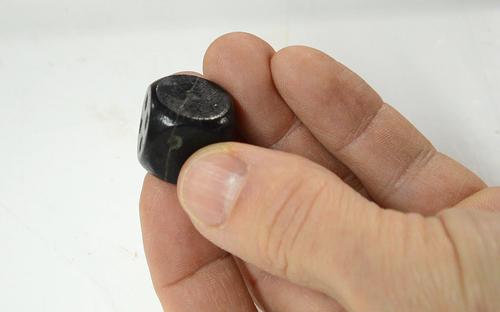 Back in the 1980s I experimented with making a "loaded die", one that
had a tendency to roll high numbers. I made this one out of a large-ish wooden
die, which I split open with a chisel, hollowed out, weighted on one side, and
glued back together.
Back in the 1980s I experimented with making a "loaded die", one that
had a tendency to roll high numbers. I made this one out of a large-ish wooden
die, which I split open with a chisel, hollowed out, weighted on one side, and
glued back together.
It's not guaranteed to roll a 6, but it has a much higher probability of landing on a high number than a low number. I showed it to some friends I played RISK with, and the first number I rilled with it was a 2. My friends didn't believe the die was loaded. I should have just gone ahead and used it in the game!
You can see the split line, especially where I applied the chisel because the wedge of the chisel compressed the surrounding fibers before the wood split.
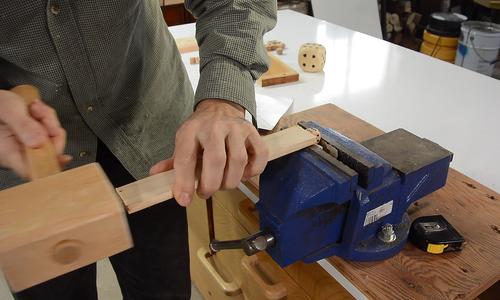 So I thought I'd experiment with splitting a wooden die without driving a
chisel into it by clamping half of it in a vise and trying to knock the other
half off with a piece of wood.
So I thought I'd experiment with splitting a wooden die without driving a
chisel into it by clamping half of it in a vise and trying to knock the other
half off with a piece of wood.
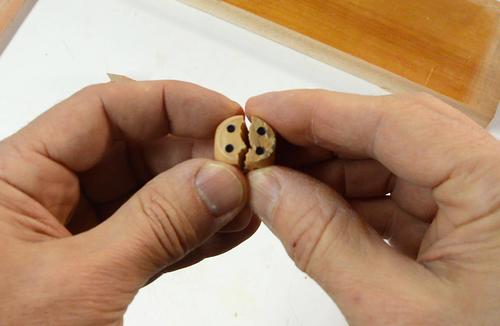 It split without a chisel line, but the part that was clamped in the vise
was quite marked up.
It split without a chisel line, but the part that was clamped in the vise
was quite marked up.
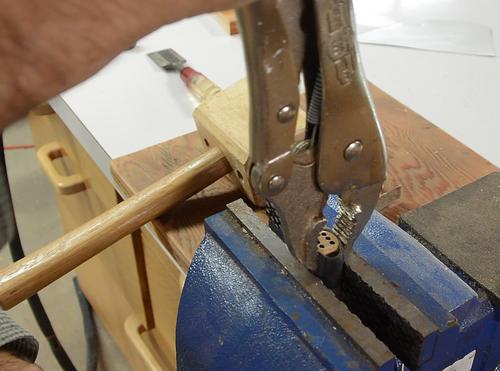 More experimenting. Surrounding the die with rubber, then trying to use some
locking pliers to pry half of it off. This didn't work either.
More experimenting. Surrounding the die with rubber, then trying to use some
locking pliers to pry half of it off. This didn't work either.
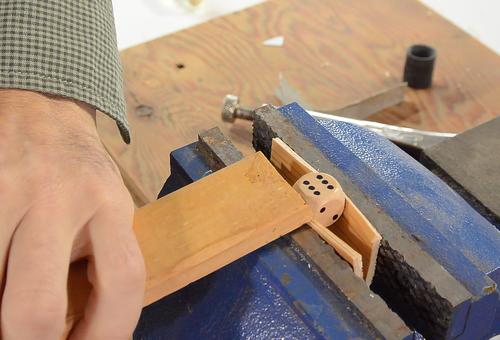 What worked best was to use some strips of hardwood between the die
and the vise jaws, a piece of wood against it, and hit that with a mallet.
What worked best was to use some strips of hardwood between the die
and the vise jaws, a piece of wood against it, and hit that with a mallet.
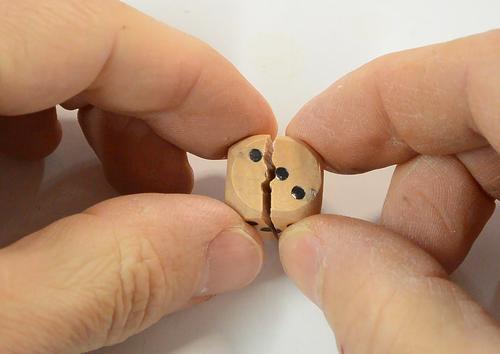 Still some damage to the faces, but no chisel line.
Still some damage to the faces, but no chisel line.
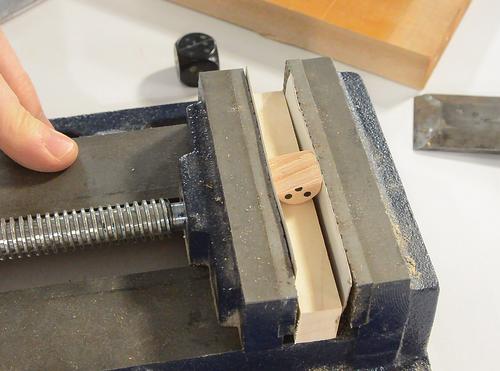 I clamped half of the die in a drill press vise
I clamped half of the die in a drill press vise
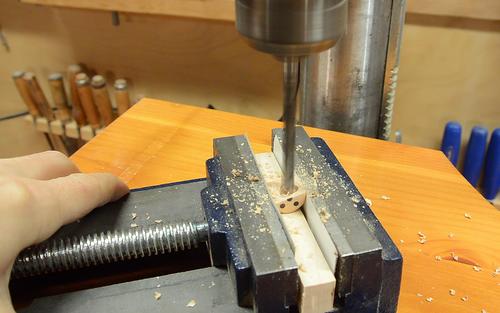
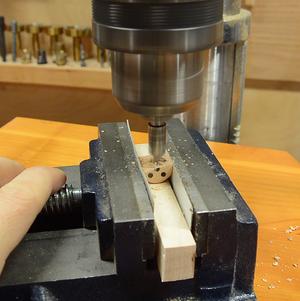 Then used a brad-point drill bit to start hollowing it out. But with the
long brad point on the drill, I couldn't drill too deep without the brad coming
going through. So I used a very short drill (a machinist's center drill) to
mostly flatten the bottom of the drill hole.
Then used a brad-point drill bit to start hollowing it out. But with the
long brad point on the drill, I couldn't drill too deep without the brad coming
going through. So I used a very short drill (a machinist's center drill) to
mostly flatten the bottom of the drill hole.
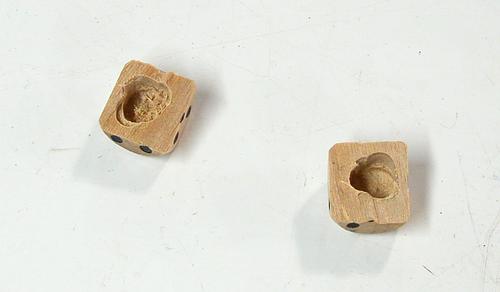
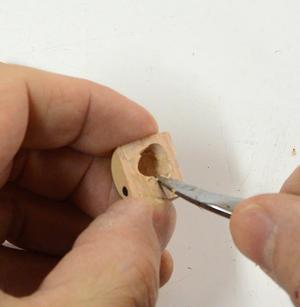 Hollowed out pieces. I carved away near the 1, 2, and 3 and also the space near
the 4, 5, and 6.
Hollowed out pieces. I carved away near the 1, 2, and 3 and also the space near
the 4, 5, and 6.
I used a carving knife to cut away the burrs from drilling the holes so the two halves would mate properly.
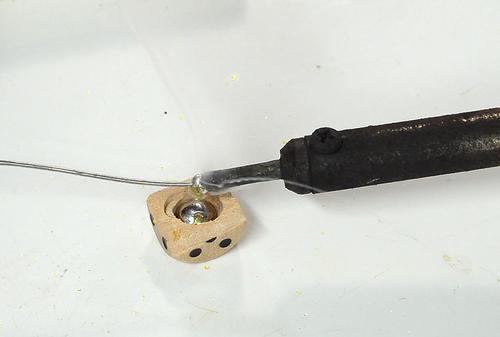 I then melted some solder into the hole that was nearest the 1, then
added some flakes of hot-melt glue to melt and fix the solder in place.
I then melted some solder into the hole that was nearest the 1, then
added some flakes of hot-melt glue to melt and fix the solder in place.
This hole is a bit off-center in order to also be near the 2 and 3. This way the die also has a tendency to roll some of the other high numbers.
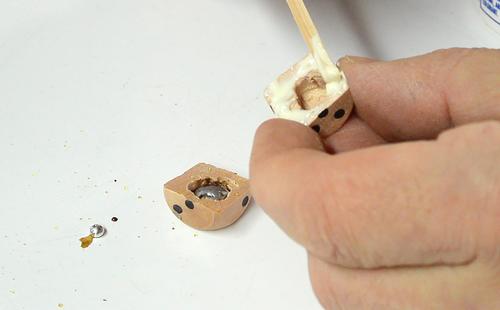
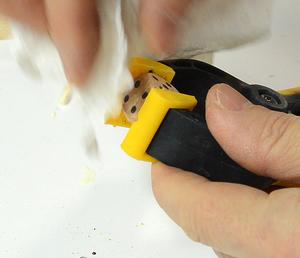 Then gluing it back together and wiping off some of the excess glue.
Then gluing it back together and wiping off some of the excess glue.
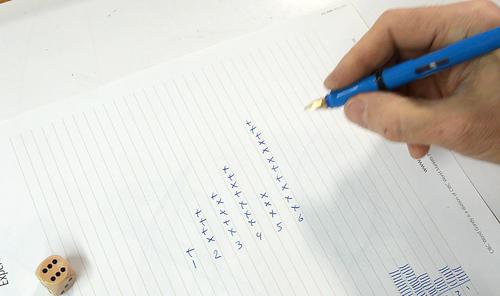 Testing it out. It does indeed roll an unusually high number of 6s, and almost no 1s.
But for some reason it didn't roll a lot of 5s.
Testing it out. It does indeed roll an unusually high number of 6s, and almost no 1s.
But for some reason it didn't roll a lot of 5s.
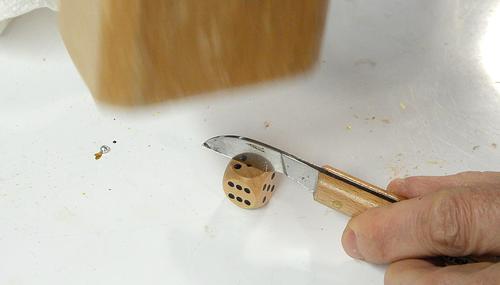 I ended up making a few more, experimenting with different ways of splitting it.
Splitting it with a knife (tapping the knife in with a mallet)
ended up working better. The narrow bevel of the knife
applies pressure more evenly, making less of a chisel line
and less damage to the faces than my splitting it in the vise method.
So if you want to make a cheating die, I'd recommend just splitting it
with a knife.
I ended up making a few more, experimenting with different ways of splitting it.
Splitting it with a knife (tapping the knife in with a mallet)
ended up working better. The narrow bevel of the knife
applies pressure more evenly, making less of a chisel line
and less damage to the faces than my splitting it in the vise method.
So if you want to make a cheating die, I'd recommend just splitting it
with a knife.
See also:
Back to my woodworking website.
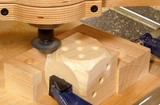 Making rounded
Making rounded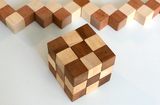 Snake cube puzzle
Snake cube puzzle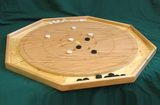 Making a crokinole board
Making a crokinole board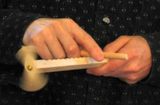 More wooden toys
More wooden toys